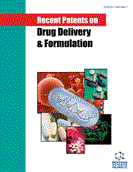Abstract
Background: Many topical agents are available in the market, which interfere with the pigmentation process at different levels. They are often known to cause side effects ranging from irritation to tumor over chronic use.
Objective: The present study was designed to develop and characterize an anti blemish cream containing herbal oils.
Methods: A herbal cream was formulated using dill, nagarmotha and black cumin oil and subjected to evaluation of its anti blemish potential against stress augmented UV-B rays-induced hyperpigmentation. Topical oil in water type of creams containing 2%, 4% and 6% of each oil was formulated using herbal oils. The formulated cream was characterized for solubility, pH, particle size, grittiness, viscosity, stability, phase separation, shelf life and spreadability, and found to be stable. Acute dermal toxicity was carried out individually for dill, nagarmotha and black cumin oil according to the OECD guidelines 402. Hyperpigmentation was induced in all the experimental animals by stress-augmented UV-B irradiation method. The animals were treated for 30 days (twice daily) with standard and test formulations by topical administration, whereas the disease group was left untreated. The skin of the animals was subjected to photographical study as well as grading for pigmentation and irritation before and after treatment. After the treatment period, the serum antioxidant levels were estimated and histopathology, histochemical studies of skin were performed.
Results: The animals treated with test formulations containing 2%, 4%, and 6% of herbal oil showed significant improvement in pigmentation compared to disease control as it is evident in photographic biochemical, histopathological and histochemical studies.
Conclusion: Thus, it was concluded that the developed anti-blemish cream containing herbal oils possesses significant anti-blemish potential. This study necessitates further evaluations in human subjects as it could have a high positive therapeutic value in the treatment of hyperpigmentation.
Keywords: Antiblemish cream, herbal oil, hyperpigmentation, UV-B irradiation.
[http://dx.doi.org/10.1111/j.1751-1097.2007.00226.x] [PMID: 18435612]
[http://dx.doi.org/10.3109/9781420003307-68]
[http://dx.doi.org/10.1038/jidsymp.2008.7] [PMID: 18369333]
[http://dx.doi.org/10.3390/ijms17071144] [PMID: 27428965]
[http://dx.doi.org/10.1590/S0365-05962013000100009] [PMID: 23539007]
[http://dx.doi.org/10.1248/bpb.30.2141] [PMID: 17978489]
[PMID: 14655804]
[http://dx.doi.org/10.1016/j.pbiomolbio.2017.06.010] [PMID: 28645743]
[http://dx.doi.org/10.7241/ourd.20141.02]
[http://dx.doi.org/10.1155/2017/7092514] [PMID: 29358959]
[PMID: 24250550]
[http://dx.doi.org/10.1016/j.jdds.2015.04.002]
[http://dx.doi.org/10.1002/1099-1573(200008) ] [PMID: 10925395]
[http://dx.doi.org/10.1111/j.1600-0536.2008.01320.x] [PMID: 18416754]
[http://dx.doi.org/10.3121/cmr.2017.1363] [PMID: 29229630]
[http://dx.doi.org/10.1016/j.jssas.2013.12.001]
[PMID: 18845065]
[http://dx.doi.org/10.1111/j.1600-0781.1995.tb00168.x] [PMID: 8738713]
[http://dx.doi.org/10.1109/RBME.2009.2034865] [PMID: 20671804]
[http://dx.doi.org/10.1111/j.1439-0426.2004.00543.x]
[http://dx.doi.org/10.1159/000210819] [PMID: 2638867]
[http://dx.doi.org/10.15171/jhp.2018.37]
[http://dx.doi.org/10.1111/j.1365-2133.1997.tb14934.x] [PMID: 9115906]
[http://dx.doi.org/10.1042/BST0351147] [PMID: 17956298]
[http://dx.doi.org/10.1002/anie.198610581]
[http://dx.doi.org/10.1113/expphysiol.1997.sp004024] [PMID: 9129943]
[http://dx.doi.org/10.1016/0891-5849(95)00043-W] [PMID: 7557551]
[http://dx.doi.org/10.1007/BF02894268] [PMID: 23105467]
[PMID: 6066618]
[http://dx.doi.org/10.1096/fj.06-6649rev] [PMID: 17242160]
[http://dx.doi.org/10.3390/ijms12084819] [PMID: 21954327]
[http://dx.doi.org/10.1016/0006-2952(70)90246-7] [PMID: 5507689]
[http://dx.doi.org/10.1046/j.1523-1747.2003.12326.x] [PMID: 12839577]
[http://dx.doi.org/10.1248/bpb.17.1417] [PMID: 7874069]
[http://dx.doi.org/10.4103/0973-7847.125531] [PMID: 24600196]
[http://dx.doi.org/10.1039/C2PP25152C] [PMID: 23111621]
[http://dx.doi.org/10.1248/bpb.34.471] [PMID: 21467631]
 27
27
















